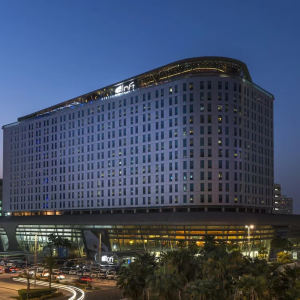A City on the Move
Dubai has always been known for its fast-paced lifestyle, where residents and visitors are constantly on the go. With wide highways, modern infrastructure, and a growing number of cars on the road, the city’s traffic system has become a vital part of daily life. At the heart of this system lies Salik, Dubai’s electronic toll collection network, designed to keep traffic flowing smoothly. But in the second quarter of this year, an unexpected trend has surfaced — free Salik trips have risen by nearly 50 percent.
This surprising jump highlights not only the adaptability of Dubai’s residents but also their creativity in finding ways to save money in a city where every dirham counts.
Understanding Salik and Its Role
For many drivers, Salik is an unavoidable part of commuting. Every time a car passes through one of the toll gates scattered across Dubai’s major highways, a fee is automatically deducted from the driver’s prepaid account. It is seamless and efficient, ensuring traffic does not stop for manual payments.

However, toll costs can add up quickly, especially for those who commute daily or live in areas with limited alternatives. This is where the rise in free trips has caught attention — showing that residents are paying more attention to how and when they use the toll system.

The Rise of Free Trips
Recent data shows that free trips through Salik gates increased by almost half compared to the same period last year. This means that thousands of drivers are now making use of strategies to avoid paying toll charges, whether through planning their routes differently, driving at times when the charges do not apply, or taking advantage of specific exemptions.

For some, it’s a simple matter of awareness. Once residents understood how the system works — such as the rules around certain vehicles, routes, or timings — they began to optimize their travel. For others, the motivation comes from a desire to save more as living costs rise in the city.
Everyday Tactics That Save Dirhams
Dubai residents are known for being resourceful, and their Salik-saving tactics prove it. Many drivers are carefully mapping their daily routes to avoid unnecessary tolls. Families living in areas like Deira or Al Nahda, for instance, have discovered alternative roads that may take a few extra minutes but save them several toll charges each week.
Others are timing their journeys differently, avoiding peak-hour crossings that may require toll usage. Carpooling has also seen a slight rise, with groups of friends or colleagues sharing rides to cut down on both fuel and toll expenses. Even delivery companies and ride-hailing drivers have started using smarter strategies to minimize toll costs while still meeting customer needs.
Balancing Cost and Convenience
For some residents, avoiding toll gates entirely is not always practical. The Salik network exists to reduce congestion and improve traffic flow across Dubai’s busiest roads. Taking longer routes might save money, but it also adds extra travel time.
This is why many residents are striking a balance. They selectively use Salik when speed and convenience are essential — such as rushing to an airport or making it on time to work — while relying on free alternatives when there is no pressure. This balance reflects a larger shift in the mindset of Dubai’s drivers, who are becoming more conscious about their spending habits.
A Reflection of Rising Awareness
The surge in free Salik trips is more than just a financial trend. It highlights the way people are increasingly aware of how their everyday choices impact their budget. In a city like Dubai, where the cost of living can be high, small adjustments in daily routines can lead to significant savings over time.
Families, in particular, have been quick to adapt. With multiple school runs, office commutes, and weekend outings, even a few toll-free trips each day can ease monthly expenses. Young professionals, too, are making smarter decisions, viewing every dirham saved on the road as money better spent on leisure, dining, or future plans.
Impact on Lifestyle and City Movement
Interestingly, this change is also influencing how people view the city’s connectivity. More drivers are exploring lesser-known routes, discovering new neighborhoods, and sometimes even enjoying a quieter, slower drive compared to the main highways.
At the same time, this shift has created discussions about the balance between cost-saving and convenience. Some believe that free Salik trips are a reward for being more mindful, while others think it adds unnecessary time to already busy schedules.
Technology and Smarter Planning
Technology has also played a big role in this trend. With navigation apps updating in real time, drivers can now check routes that bypass toll gates while still avoiding traffic jams. Some apps even highlight the potential savings from avoiding toll roads, making it easier for residents to make quick decisions on the go.
This integration of technology into everyday driving has made saving money almost effortless. It has empowered drivers to think beyond the straightest path and instead plan smarter journeys.
The Bigger Picture
Dubai’s government has always been focused on creating a smooth transport network that supports both residents and visitors. The Salik system is part of that vision, ensuring traffic congestion is minimized. But the rise in free trips also reflects how residents are taking ownership of their daily travel decisions, aligning them with their personal financial goals.
While toll revenues remain an important part of infrastructure maintenance, the fact that people are using the system more consciously suggests a shift towards greater awareness and efficiency. This could even pave the way for future innovations, such as more flexible toll policies or additional incentives for cost-conscious commuters.

Looking Ahead
As Dubai continues to grow, its residents are showing that they are just as adaptable as the city itself. The nearly 50 percent rise in free Salik trips is not just about toll gates — it is about resilience, smart decision-making, and the determination to balance lifestyle with affordability.
It demonstrates a key lesson that resonates beyond roads and traffic: with a little awareness and planning, it is possible to live more efficiently in a fast-moving city.
A Human Story of Adaptation
Behind every free trip is a human story — a parent trying to stretch the family budget, a young professional saving for their future, a driver finding joy in discovering new routes, or a delivery rider navigating the city with efficiency in mind. These stories remind us that progress is not only about speed but also about making choices that bring balance and sustainability to everyday life.
Dubai’s roads may be bustling with cars, but they are also filled with people who are learning to move smarter, not just faster. And in this shift, the city finds a reflection of its own dynamic spirit — one that is constantly evolving, just like its residents.
Do follow UAE Stories on Instagram
Read More: Ministry of Crab Maldives: Ultimate Seafood Dining Experience















